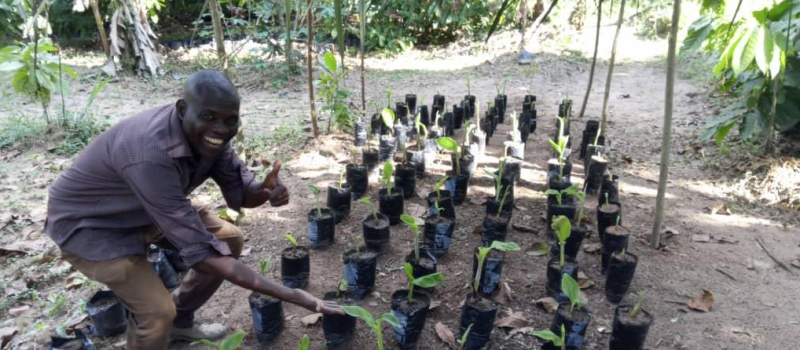During its first partnership with the DRCongo (2016-2021), CAFI invested 126 million US dollars in seven multisectoral, integrated projects in the DRC (PIREDD from its French acronym), engaging with communities at the local level and authorities at the provincial level. Here's what we've achieved and learned so far.
In Brazil and Indonesia, forest loss is mainly caused by clearing forest land to make way for agro-industrial operations encompassing commodities like soybeans, beef, palm oil, and more.
In the Democratic Republic of the Congo, on the other hand, the loss of forests is due to the local need for land by tens of millions of farmers to practice slash-and-burn agriculture and produce charcoal, which is primarily exacerbated by solid population growth.
Therefore, any proposed solution to stem forest loss in the DRC must be based on the addressing the needs of local communities. Concretely, this means finding answers to the question: How to ensure food security and substantially increase agricultural production without clearing forests?
CAFI's answer to this question is through financing “Integrated Jurisdictional Programmes to Reduce Deforestation and Forest Degradation” (or PIREDD in French), that implement a series of measures.
Our approach, our results
Such measures occur at the level of one or more provinces and are based on three main elements:
- Structuring actors in the management and use of land and forests within inclusive governance platforms at provincial and local levels. A central element of this process is the structuring of legitimate representative bodies managing community areas, such as the local village development committee (or CLD in French). To date, close to 2200 of these local village development committee have been established, covering 11% of DRCongo's villages.
- Planning the use of land at provincial and local levels : Structured local institutions develop village land-use plans (in accordance with the National Spatial Planning Policy) and implement “green development plans” that together define a 10-year vision for the future. This has already been done in hundreds of villages across the DRC (here are some examples). By end 2022, these local land-use plans covered 8.5 million hectares (a quarter of the size of the United Kingdom).
- Improving agricultural and forestry practices: the plans resulting from the participatory land use planning process are implemented through targeted support by the PIREDDs to agriculture, forestry and conservation. This support aims to limit the predictable and necessary expansion of agriculture while improving food security and community incomes. To work, this support must start from free prior and informed consent from the community, clear land use rights and absence of conflict, and alignment with the zoning plan. It has been estimated that revenues from agricultural activities have doubled or tripled among direct beneficiaries in some of the PIREDDs supported by CAFI.
What we've learned so far
The main lessons learned from the first phase of PIREDDs can be summarised as follows:
- It is possible to greatly impact vast areas and large numbers of farmers (over 60,000 direct beneficiaries to date) with relatively few resources if the management and implementation structure is adequate.
- Farmers and other community stakeholders show genuine interest and engagement on land-use planning. The plans developed at the village level provided additional official recognition of past agreements, thus contributing significantly to collective tenure security for communities. The land use planning process has re-ignited latent conflicts in a relatively small proportion of cases.
- Securing the tenure of plantations, including for perennial crops and forests, can be overcome without formal land titles through agreements involving stakeholders and authorities (sector heads and traditional chiefdoms). However, individual and collective land tenure security needs to be strengthenedthrough the tools from the Land tenure reform.
- Local Development Committees have easily established as legitimate representative bodies to guide the development of villages, and have been recognised by higher-level authorities. This is a major achievement of CAFI's support. Conflicts between CLDs and customary authorities, if they exist, generally stay under control because customary authorities are involved in CLDs. The plans drawn up by the CLDs have been easily accepted and validated by the local administrative and customary authorities.
- Investing in local infrastructure (such as building or maintaining roads and bridges) play a key role in building the trust of farmers and authorities at all levels.
- Performance-based approaches, including payments for environmental services, have been readily accepted by communities as an important tool for implementing green development plans at the village level.
What's next ?
The first phase of investment aimed to experiment with multiple approaches and tools in various contexts. This approach is being harmonised for the second phase of the CAFI-DRCongo partnership to lay the foundations for a transition to a payment scheme for environmental services through which CAFI funding will be performance-based.
Originally published on www.cafi.org

